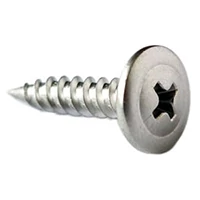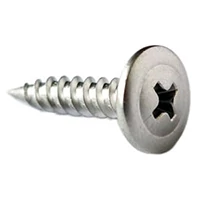Jan . 10, 2025 09:23
Back to list
YZP CHIPBOARD SCREW
When selecting the right fasteners for construction or DIY projects, self-tapping screws emerge as an unrivaled choice, offering unique efficiency and adaptability across various applications. Drawing from extensive experience, these screws provide a perfect blend of precision and reliability, minimizing the hassle associated with drilling and fastening tasks.
In terms of installation, using a power drill with adjustable torque settings is often the recommended approach. This technique ensures consistent driving without over-tightening, which could otherwise strip the threading. Many prefer using magnetic tips or holders, which not only enhances ease of use but lessens the risk of misalignment, thereby safeguarding the materials and ensuring neat, professional finishes. Real-world experiences and anecdotes highlight compelling advantages of self-tapping screws, such as their reliability in securing components in automotive assemblies or electronics, where precision is crucial. Homebuilders and renovators also vouch for their versatility in various home improvement projects, from cabinetry to decking, underpinning their indispensable role in modern construction. Manufacturers and industry experts continually emphasize that while these screws offer immense utility, their proper application dictates the overall success of any given project. Hence, leveraging insights from experienced users and utilizing high-quality products are vital steps in achieving enduring and stable constructions. In conclusion, self-tapping screws stand out as a paramount choice for anyone seeking a blend of expertise and practicality in their fastening solutions. Their unique ability to thread into materials effortlessly, backed by strong manufacturing standards, ensures they remain a trusting ally in a myriad of professional and domestic applications.


In terms of installation, using a power drill with adjustable torque settings is often the recommended approach. This technique ensures consistent driving without over-tightening, which could otherwise strip the threading. Many prefer using magnetic tips or holders, which not only enhances ease of use but lessens the risk of misalignment, thereby safeguarding the materials and ensuring neat, professional finishes. Real-world experiences and anecdotes highlight compelling advantages of self-tapping screws, such as their reliability in securing components in automotive assemblies or electronics, where precision is crucial. Homebuilders and renovators also vouch for their versatility in various home improvement projects, from cabinetry to decking, underpinning their indispensable role in modern construction. Manufacturers and industry experts continually emphasize that while these screws offer immense utility, their proper application dictates the overall success of any given project. Hence, leveraging insights from experienced users and utilizing high-quality products are vital steps in achieving enduring and stable constructions. In conclusion, self-tapping screws stand out as a paramount choice for anyone seeking a blend of expertise and practicality in their fastening solutions. Their unique ability to thread into materials effortlessly, backed by strong manufacturing standards, ensures they remain a trusting ally in a myriad of professional and domestic applications.
Next:
Prev:
Latest news
-
Top Choices for Plasterboard FixingNewsDec.26,2024
-
The Versatility of Specialty WashersNewsDec.26,2024
-
Secure Your ProjectsNewsDec.26,2024
-
Essential Screws for Chipboard Flooring ProjectsNewsDec.26,2024
-
Choosing the Right Drywall ScrewsNewsDec.26,2024
-
Black Phosphate Screws for Superior PerformanceNewsDec.26,2024
-
The Versatile Choice of Nylon Flat Washers for Your NeedsNewsDec.18,2024
Related News










